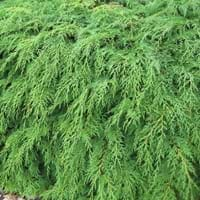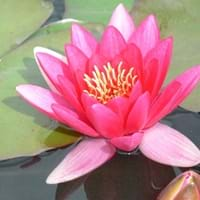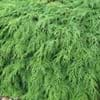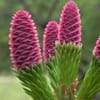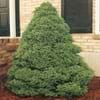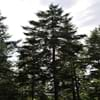Life Span
Perennial
Perennial
Type
Needled or Scaled Evergreen
Aquatics
Origin
Russia/Siberia
Hybrid origin
Types
Not available
Not Available
Habitat
Cold Regions
Ponds
USDA Hardiness Zone
4-7
6-10
Sunset Zone
A3, 1a, 1b, 2a, 2b, 3a, 3b, 4, 5, 6, 7, 8, 9, 10, 14, 15, 16, 17
21,22
Habit
Spreading
Spreading
Minimum Height
Not Available
Flower Color
Dark Green
Yellow, Orange, Light Yellow, Gold, Peach, Orange Red, Dark Salmon, Bronze
Flower Color Modifier
Bicolor
Multi-Color
Fruit Color
Non Fruiting Plant
Green, Not Available
Leaf Color in Spring
Green
Green, Sienna
Leaf Color in Summer
Green, Dark Green
Green, Sienna
Leaf Color in Fall
Green, Dark Green, Copper
Green, Sienna
Leaf Color in Winter
Purple, Sienna, Burgundy, Bronze
Not Available
Leaf Shape
Scale-like imbricate
Round
Plant Season
Spring, Summer, Fall, Winter
Summer, Fall
Sunlight
Full Sun, Partial Sun, Partial shade
Full Sun, Partial Sun
Type of Soil
Clay, Loam
Clay, Loam, Sand
The pH of Soil
Acidic, Neutral
Neutral
Soil Drainage
Well drained
Poorly Drained
Bloom Time
Not Available
Summer
Tolerances
Shade areas
Wet Site
Where to Plant?
Ground
In Water
How to Plant?
Seedlings, Semi-hardwood cuttings
Stem Planting
Plant Maintenance
Low
Medium
Watering Requirements
Water during dry weather, Water occasionally
Plant grows in water
In Summer
Lots of watering
Lots of watering
In Spring
Moderate
Moderate
In Winter
Average Water
Average Water
Soil pH
Acidic, Neutral
Neutral
Soil Type
Clay, Loam
Clay, Loam, Sand
Soil Drainage Capacity
Well drained
Poorly Drained
Sun Exposure
Full Sun, Partial Sun, Partial shade
Full Sun, Partial Sun
Pruning
Remove damaged leaves, Remove dead branches, Remove dead leaves
Remove damaged leaves, Remove dead branches, Remove dead leaves
Fertilizers
slow-release fertilizers
All-Purpose Liquid Fertilizer
Pests and Diseases
No serious insect or disease problems
Not Available
Plant Tolerance
Shade areas
Drought
Flowers
Insignificant
Showy
Flower Petal Number
Single
Single
Foliage Texture
Fine
Coarse
Foliage Sheen
Matte
Glossy
Self-Sowing
No
Not Available
Attracts
Bees, Butterflies, Hummingbirds
Fishes
Allergy
Not Available
Not Available
Aesthetic Uses
Cottage Garden, Ground Cover
Showy Purposes, Water gardening
Beauty Benefits
Not Available
Not Available
Environmental Uses
Not Available
Air purification
Medicinal Uses
Not Available
Not Available
Part of Plant Used
Not Available
Leaves, Root, Stem
Other Uses
Used for bedding in gardens
Culinary use, Used as Ornamental plant, Used in herbal medicines
Used As Indoor Plant
No
Yes
Used As Outdoor Plant
Yes
Yes
Garden Design
Alpine, Edging, Feature Plant, Foundation, Groundcover, Mixed Border, Rock Garden, Wall
Container, Cutflower, Water Gardens
Botanical Name
MICROBIOTA decussata
NYMPHAEA 'Andreana'
Common Name
Microbiota, Siberian carpet cypress, Russian arbor vitae
Hardy Waterlily
In Hindi
माइक्रोबायोटा
Hardy Waterlily
In German
Mikrobiota
Hardy Waterlily
In French
microbiote
Hardy Waterlily
In Spanish
microbiota
Hardy Waterlily
In Greek
μικροχλωρίδας
Hardy Waterlily
In Portuguese
microbiota
Hardy Waterlily
In Polish
mikroflory
Hardy Waterlily
In Latin
Microbiota
Hardy Waterlily
Phylum
Tracheophyta
Magnoliophyta
Class
Pinopsida
Magnoliopsida
Order
Pinales
Nymphaeales
Family
Cupressaceae
Nymphaeaceae
Genus
Microbiota
Nymphaea
Clade
Not Available
Angiosperms
Tribe
Not Available
Not Available
Subfamily
Not Available
Not Available
Number of Species
Not Available
Difference Between Microbiota and Hardy Waterlily
If you are confused whether Microbiota or Hardy Waterlily are same, here are some features about those plants to help you choose better. Many people think that these two plants have the same characteristics, but one can see Microbiota and Hardy Waterlily Information and learn more about it. Fertilizers required for proper growth of Microbiota are slow-release fertilizers, whereas for Hardy Waterlily fertilizers required are All-Purpose Liquid Fertilizer. Hence, one should know the basic difference between Microbiota and Hardy Waterlily if you are planning to have them in your garden to enhance its beauty.
<
Flowering PlantsImportance of Microbiota and Hardy Waterlily
Want to have the most appropriate plant for your garden? You might want to know the importance of Microbiota and Hardy Waterlily. Basically, these two plants vary in many aspects. Compare Microbiota and Hardy Waterlily as they differ in many characteristics such as their life, care, benefits, facts, etc. Every gardener must at least have the slightest clue about the plants he wants to plant in his garden. Compare their benefits, which differ in many ways like facts and uses. The medicinal use of Microbiota is Not Available whereas of Hardy Waterlily is Not Available. Microbiota has beauty benefits as follows: Not Available while Hardy Waterlily has beauty benefits as follows: Not Available.
Compare Facts of Microbiota vs Hardy Waterlily
How to choose the best garden plant for your garden depending upon its facts? Here garden plant comparison will help you to solve this query. Compare the facts of Microbiota vs Hardy Waterlily and know which one to choose. As garden plants have benefits and other uses, allergy is also a major drawback of plants for some people. Allergic reactions of Microbiota are Not Available whereas of Hardy Waterlily have Not Available respectively. Having a fruit bearing plant in your garden can be a plus point of your garden. Microbiota has no showy fruits and Hardy Waterlily has no showy fruits. Also Microbiota is not flowering and Hardy Waterlily is not flowering . You can compare Microbiota and Hardy Waterlily facts and facts of other plants too.
